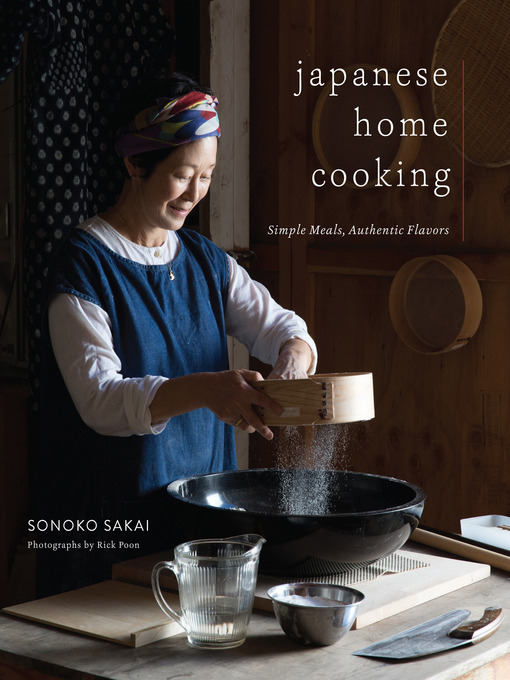
Japanese Home Cooking
Simple Meals, Authentic Flavors
کتاب های مرتبط
- اطلاعات
- نقد و بررسی
- دیدگاه کاربران
نقد و بررسی

Starred review from August 5, 2019
From her home kitchen in Los Angeles, Sakai (The Poetical Pursuit of Food) renders Japanese flavors for the Western cook with exquisite care. She creates basics more often purchased at the supermarket, fermenting miso (for at least six months), kneading soba dough “(Wax on! Wax off!),” and pressing fresh tofu (“one of the tastiest foods in the world”). All of this yields rich rewards in dishes like a spicy soup of crisp-skinned duck and delicate soba noodles, or a simple broth with mushrooms, tofu, and yuzu peel. Throughout, Sakai brings readers along as she explores the ingredients and traditions she and her family carried with them from Japan. Readers are transported to the 300-year-old Tokyo shop where Sakai’s childhood friend had a job shaving woodlike blocks of preserved fish called katsuobushi, which is used to make a dashi broth. A bento box filled with inari zushi (fried tofu filled with sushi rice) and crab cream croquettes evokes Sakai’s schoolgirl days. But, as Sakai says, “he goal is not to stress yourself out but to enjoy the creative process. People will appreciate your labor of love.” Home cooks wanting to dive into Japanese cooking will find Sakai to be a delightful and encouraging guide.

January 1, 2020
Recipe developer and cooking teacher Sakai offers insight into home cooking in this stunning book. While sushi and other familiar dishes appear, the focus is on simple fare. Simple is relative, however; Sakai advises readers that many Japanese dishes have multiple components, and as a result, she starts with a large sSECTION of pantry basics. From there, she progresses through larger dishes and finishes with a small array of desserts and beverages. The collSECTION features an abundance of tempting recipes, such as adzuki bean paste ice pops, complemented by beautiful photographs. Sakai frames each recipe with personal recollSECTIONs, and her writing is warmly instructional in tone. VERDICT A delight to browse, and sure to appeal to those keen to explore Japanese cooking further. Highly recommended for any culinary collSECTION.--Peter Hepburn, Coll. of the Canyons Lib., Santa Clarita, CA
Copyright 2020 Library Journal, LLC Used with permission.

Starred review from October 1, 2019
California-based author-teacher Sakai (The Poetical Pursuit of Food, 1986) delivers, quite simply, everything home chefs need to know to master Japanese home cooking, or at least give it a try. She shares this information via a wealth of photographs, step-by-step sidebars (for example, how to clean and cut a squash or compose a bento box), and a measured plan for what to cook when. She starts with the principles?like flavors, senses, colors, cooking techniques, and elements of a meal?followed by equipment needs. The "Pantry" section covers fundamentals like dashi and seaweed and their variations, rice and noodles, and eggs as well as fermenting, seasoning, and using condiments. The 160 recipes include explicit directions, ingredient notes, and the necessary how-tos, along with color photographs: Grilled rice balls, homemade granola with lucky bean, fish bone soup, spicy duck soba noodles in hot broth, just to name a few. In between her lessons are spreads on U.S. farmers of Japanese items; readers meet Robin Koda of Koda Farms (rice), consider the ocean with Seiichi Yokota of Yokose Seafood; and harvest seaweed with Barbara Stephens and John Lewallen. An exhaustive course that will take up no small amount of time and patience?and yield welcome results.(Reprinted with permission of Booklist, copyright 2019, American Library Association.)

























دیدگاه کاربران